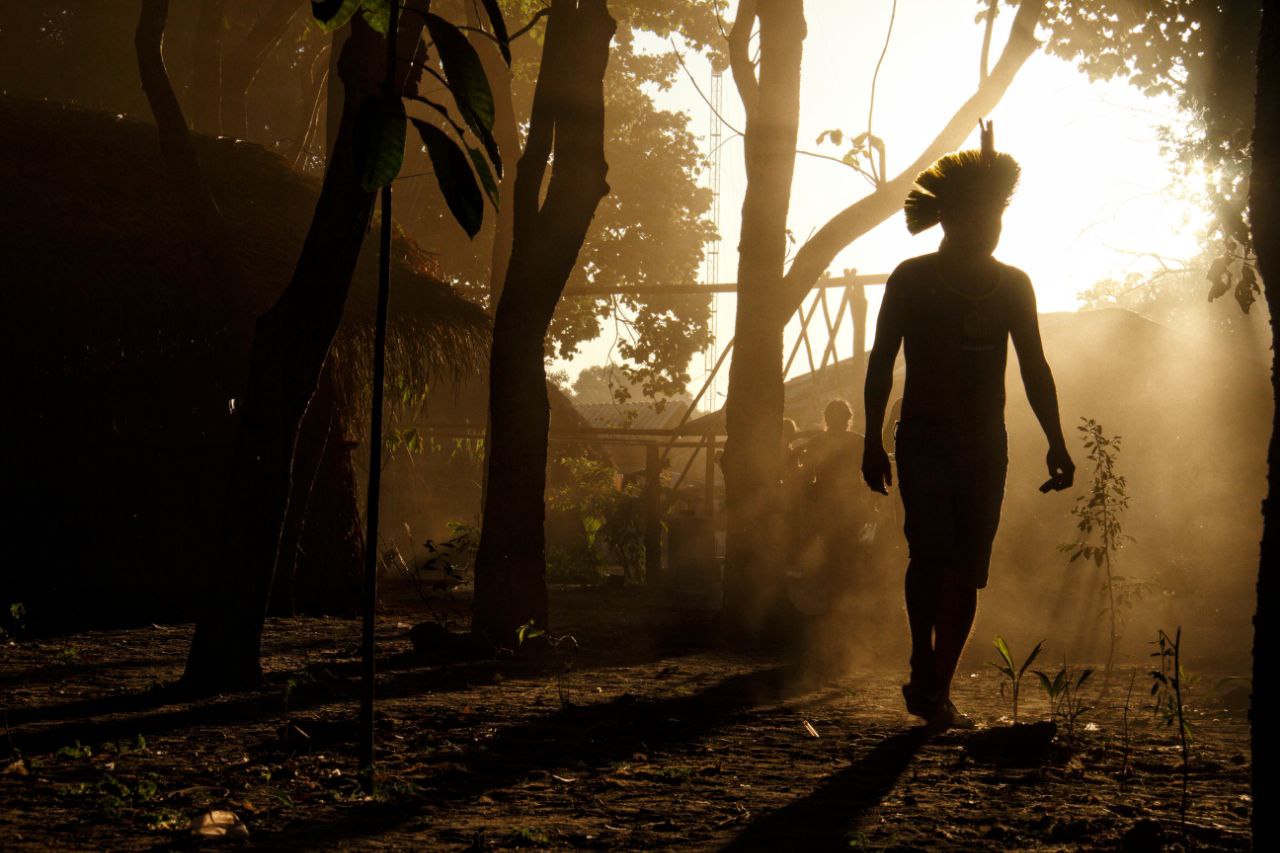The Moore Foundation’s Andes-Amazon Initiative has been working with partners in the Amazon basin to protect forest and freshwater ecosystems since 2001, and one area of focus is ensuring conservation and effective management of lands belonging to Indigenous peoples and local communities. Part of effective management is elevating Indigenous voices, and one of the strongest advocates for the Amazon has been the Brazilian Indigenous Kayapó leader, Chief Raoni Metuktire, who was part of a group that visited the Stanford Doerr School of Sustainability in September 2024 to speak about the challenges facing the lands and people of the Amazon and to issue a call to action for people across the world through the award-winning short film, “The Chief’s Call: Heritage, Land and the Future”.
The Amazon not only contains 80% of the world’s biodiversity and is a key piece of global 30x30 sustainability and biodiversity goals, but is also home to numerous Indigenous communities with deep knowledge of the ecosystem. Given Indigenous communities’ close connections with the land, the challenges facing the region impact their way of life and survival.

Credit: Lucas Ramos
For more than 20 years, the Andes-Amazon Initiative has been investing in the broader Xingu mosaic, which encompasses some 26 million hectares of Indigenous lands, protected areas and extractive reserves. These investments have supported the creation of protected areas and the development of management tools in the Xingu mosaic, including the territorial management plans for the Kayapó complex overseen through the partnership of three Indigenous organizations. Protecting these lands and biodiversity goes hand-in-hand with addressing climate change concerns by preserving valuable ecosystems, and effective management helps ensure reductions in deforestation and forest degradation in protected areas.
The Chief’s Call: Heritage, Land and the Future
Chief Raoni was joined on the Stanford panel by his grandson Beptuk Metuktire, who the chief is mentoring to take over in the future (Beptuk is currently the Youth Leader of the Mebêngôkre/Kayapó people). Ecologist Dr. Paulo Moutinho and filmmaker Lucas Ramos also participated in the panel discussion and presentation of Ramos’ 15-minute documentary “The Chief’s Call: Heritage, Land and the Future”. The film focuses on the struggles Indigenous peoples face, told through their own words, and highlights Chief Raoni's dedication to defending human rights. A key message of the film centers on the importance of bringing together Indigenous knowledge and western science to protect the Amazon; while emphasizing the opportunity for dialogue between Indigenous peoples and external partners. The foundation’s long-term partner in Brazil, the Amazon Environmental Research Institute, worked to create the film alongside the Raoni Institute and Filmes do Fogo. It was also supported by the Moore Foundation and Bari Filmes. Recently, the film won a prize for best short film at FestiFrance.
After years of work in the region, it is promising to see different experts coming together in a strong example of co-production of knowledge and raise their voices via tools such as the documentary. “Sometimes, as scientists, I feel like we are spreading news about disasters, like there is no solution. But Indigenous peoples know there are solutions. Raoni is talking about solutions and bringing hope,” Dr. Moutinho said. Recognizing Indigenous peoples’ intimate knowledge of the Amazon and the value of co-production of knowledge has been a priority in modern conservation efforts. It is encouraging to see more people acknowledge the importance of cross-generational and cross-disciplinary knowledge sharing to chart the best path forward for the region.
Dr. Maria DiGiano, program officer at the Moore Foundation, said, “Chief Raoni shared with us and the Stanford community his powerful connection to the Amazon forest and in doing so, demonstrated his gift of bringing people together to envision a positive future for the Amazon.”
Spreading the word and raising awareness about the region requires persistent attention.
It is clear that we must work collectively to elevate Indigenous voices in addition to other efforts. “We need to take this legacy and continue what [Chief Raoni] has done,” Beptuk said. “His struggle does not end…we need to show how the Indigenous world thinks, not as individuals, but messengers of the forest.”

Message sent
Thank you for sharing.